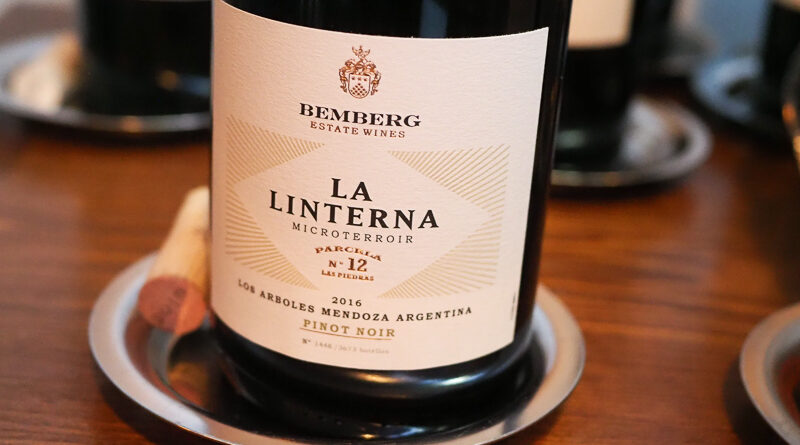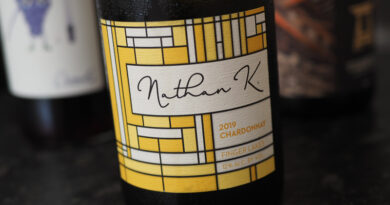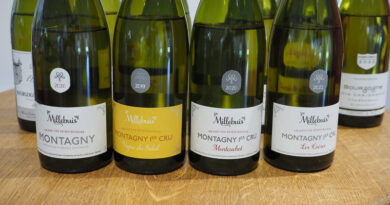Argentina goes super-premium: the wines of Bemberg Estate with Daniel Pi
Website: https://www.bembergestatewines.com/eng/home
Over recent decades Argentine wine has become well established, and extremely popular. At the more commercial level, Malbec from Argentina has become a fixture in the wine scene. It’s delicious, consistent and offers great value for money. But how can Argentina demonstrate its fine wine credentials? It’s a tougher task to claim a seat at the table with the best wines of the world, many of which have then benefit of history on their side. But there have been quite a few ambitious producers making serious fine wines, such as Catena, Achaval Ferrer and Paul Hobbs. But the latest entrant onto this stage is remarkable in that it is solely focusing on making high-end wines, without a supporting lower tier. This producer is Bemberg Estate Wines, and it’s a project fronted by Daniel Pi with the vineyard resources of Argentina’s largest wine company behind it.

I met with Daniel Pi at the excellent Wild Flor in Hove to taste through these wines. [The last time I saw Daniel was when we were both stranded at Moscow’s Domodedovo airport overnight after taking part in the Simple Congress in 2019!] Daniel spent more than 30 years working for the Peñaflor group, which when he started in 1992 was owned by the Pulenta Family. It was sold to an investment group, DLJ Merchant Banking Partners, in 2001, and then was bought by the Bemberg Family in 2010. They had been owners of the Kilmes brewery (they sold this to InBev in 2006). The Bembergs have a rule that everyone has to retire at 65 from the company, so now they are on the sixth generation of the family, and there are quite a few of them involved as they have lots of business interests.
‘I offered to make them wine from the best vineyards they have,’ says Daniel. ‘Peñaflor has vineyards from Salta to Neuquén. I knew where the best vineyards were, and selected the plots to make wine for family and friends. Originally it was just to let them know what they had.’ There were quite a few family and friends of the Bembergs, so the production of these very selected, top wines was around 1500 cases. But it turns out that the sixth generation of the family knew quite a bit about wine, and they came up with a suggestion. They found new world wines typically a bit young, released very early: could Daniel make wines that could be aged in bottle for many years? He said yes, and the next discussion was whether these wines could be released commercially, too. The main discussion here revolved around the use of the family name. In the end they decided to use the Bemberg name and to release the wines in 2016. The first release was in 2018 with the 2013 vintage of Pionero, and this was followed by the first Chardonnay release, the 2015 vintage. Currently 4000 cases are made, but the goal is to take this up to 10 000 cases.
One of the key vineyards is El Tomillo in Gualtallary, at 1250 m altitude. They have mapped this vineyard extensively, looking at the soil depth on a 10 m grid. This is an alluvial soil, with large river stones, gravel, caliche (a calcium carbonate layer that develops in arid regions forming a crusty layer) and then silty sand. The silty sand layer has blown around, and in some parts of the vineyard is thicker. This map has helped inform planting and management decisions. The portion of the vineyard planted in 1998 was when the big vine theory was trending. The US universities were saying that the vine density wasn’t important, but rather the leaf area to crop ratio, and this bit is planted at a density of 2000 vines per hectare. By the time the 2016 plantings were made, the small vine theory had emerged: here, what matters is crop load per vine, and high density plantings of 11 000 (for the bony bits) and 8000 (for the more fertile bits) per hectare were chosen.
THE WINES
Bemberg Estate La Lintera Chardonnay Finca El Tomillo 2018 Gualtallary, Argentina
14% alcohol. This comes from Plot #1 in El Tomillo, planted in 1998, Clone R8. This is one of the first Chardonnay vineyards in Gualtallary. Terroir is fine sandy soil (70 cm) over large river stones with a significant calcium carbonate content. 2666 vines per hectare, so this is from the big vine theory days. A lot of thought has gone into the winemaking here, with picking in three tranches. The first tranch is fermented and aged in concrete eggs with no malolactic. The second tranche, picked five days later, is whole cluster pressed into foudre, after settling to 180 NTUs (subsequent vintages have used 300 NTUs, a little cloudier, to get a bit of nice reduction). Then the third pick, at 10 days later than the first, goes to new French oak 500 litre barrels, of three different origins and two toasting levels. The three different components are then blended, and aged together. Complex spicy nose with pear, peach and even a hint of melon. The palate is concentrated with powerful spice-laden citrus and pear fruit. It has power and balance and tastes pretty sophisticated. 94/100
Bemberg Estate La Lintera Pinot Noir 2016 Gualtallary, Argentina
This is from their Arboleda property, which is closer to the Andes on an alluvial fan. Planted in 2010 at 1300 m it gets more rainfall (600 mm) and is dry-farmed. This vineyard also has Chardonnay and some Syrah. They have 115, 667 and 777 clones, and decided to go with the latter for this wine. 15-20% whole cluster in lasagne layers with destemmed fruit in 4000 litre tronconic oak vats. Cold maceration followed by a week of fermentation then aged in barrels for a year, and foudres for a further 6 months. Sweetly aromatic with floral red cherry fruit on the nose. There’s good density on the palate which shows sweet cherry and raspberry fruit with some spicy detail, and some tannic grip. There’s restraint here as well as intensity, and it has the potential to age positively even further. 94/100

Bemberg Estate La Lintera Malbec Parcella No 5 El Tomillo 2016 Gualtallary, Mendoza, Argentina
This is fermented with wild yeasts in cement tanks, with pump overs and a couple of delestage, with 25 days maceration. Then they take the juice from draining the pomace overnight (one barrel) and then press. This gives them the free run, the drainings and the press wine to blend for this wine. With the heart of the wine, they make Pionero. The reds are typically made with 50% new oak, and they are moving to 500 litre barrels and foudres from small oak. Concentrated, brooding and intense with bold blackberry and black cherry fruit, showing firm tannins and a gravelly, spicy undercurrent. Finishes salty. Lovely intense black fruits here. 95/100
Bemberg Estate Valle de Pedernal Malbec 2016 Mendoza, Argentina
Sandy soils with stones. So fresh and fine with floral fruits: black cherries and blackcurrant, supported by some lovely spicy characters. This is textural and fresh on the palate with nice structure under the black cherry fruit, finishing with a bit of grip. 95/100

Bemberg Estate La Lintera Cafayete Cabernet Sauvignon 2016 Mendoza, Argentina
This is from a parcel of Cabernet Sauvignon grown in pergola, planted 1956. Daniel Pi says that all the books say to avoid pergola because you need sun on the bunches to burn off the pyrazines, but this wine shows that’s not the case. Beautifully fine and gravelly with lovely blackcurrant fruit. Grainy and mineral with real finesse. Such clarity and purity here with a mineral core and lovely tannins. Very fine. 96/100

Bemberg Estate Pionero 2016 Mendoza, Argentina
In the past (we’re talking 19th century), people from Argentina used to drink a lot of right bank Bordeaux, back in the day when there was a good portion of Malbec in the blend. Daniel created this blend with 50% Malbec and the balance Cabernet Sauvignon and Cabernet Franc as a tribute to Otto Bemberg, the pioneer of the family who moved here in 1965. All the fruit is from Gualtallary. Blackcurrant, black cherry and cedar spice here with lovely concentration and structure. It’s firm, but also has some ripeness and comes across quite seductive. Very fine, with a slight saltiness on the finish. 96/100
Bemberg Estate Pionero 2013 Mendoza, Argentina
This shows blackcurrant, spice and cherry with some earthy savoury hints. The black fruits are quite spicy and grainy with lovely tannic structure. A substantial wine of real impact, finishing firm. 94/100
Find these wines with wine-searcher.com




